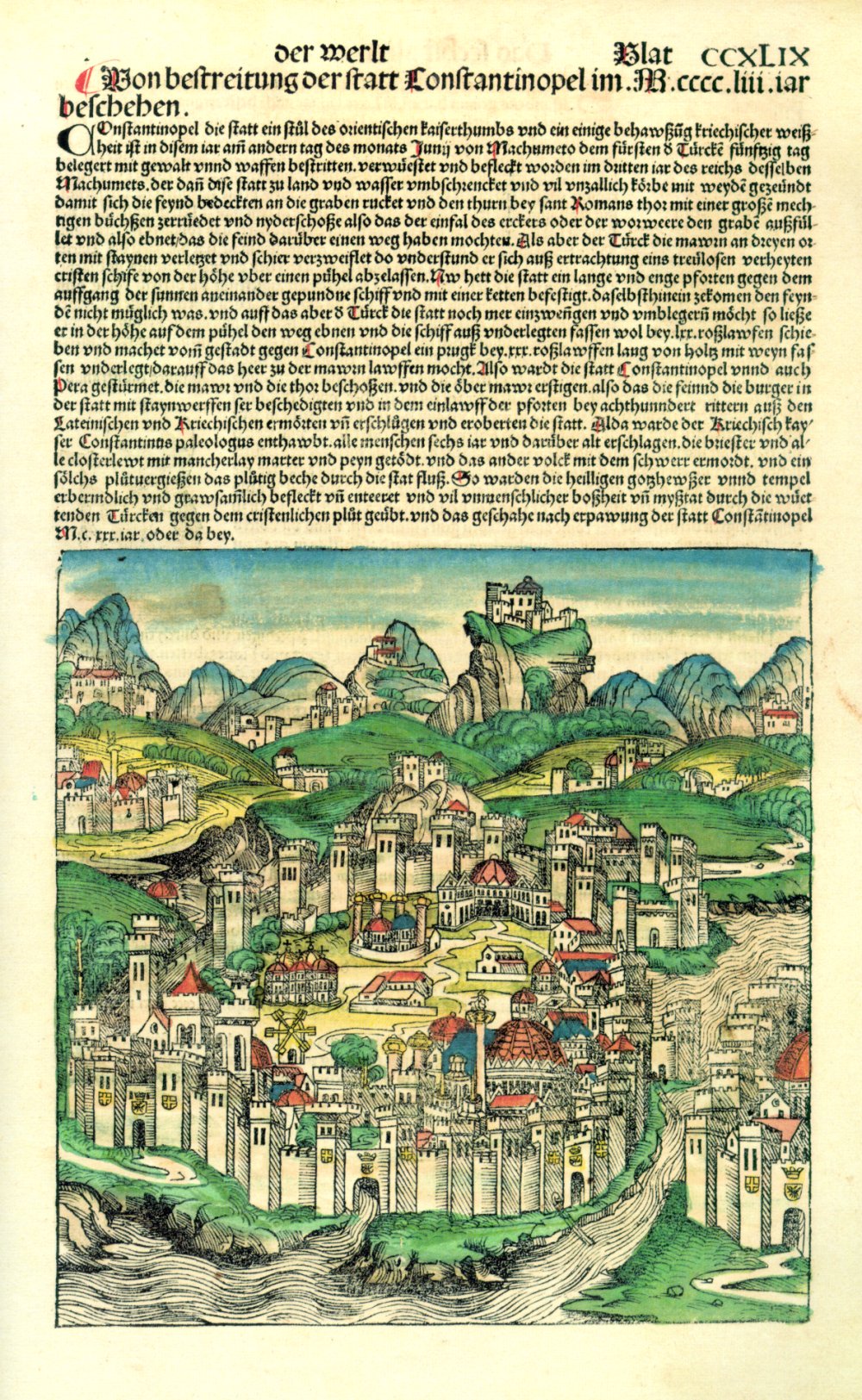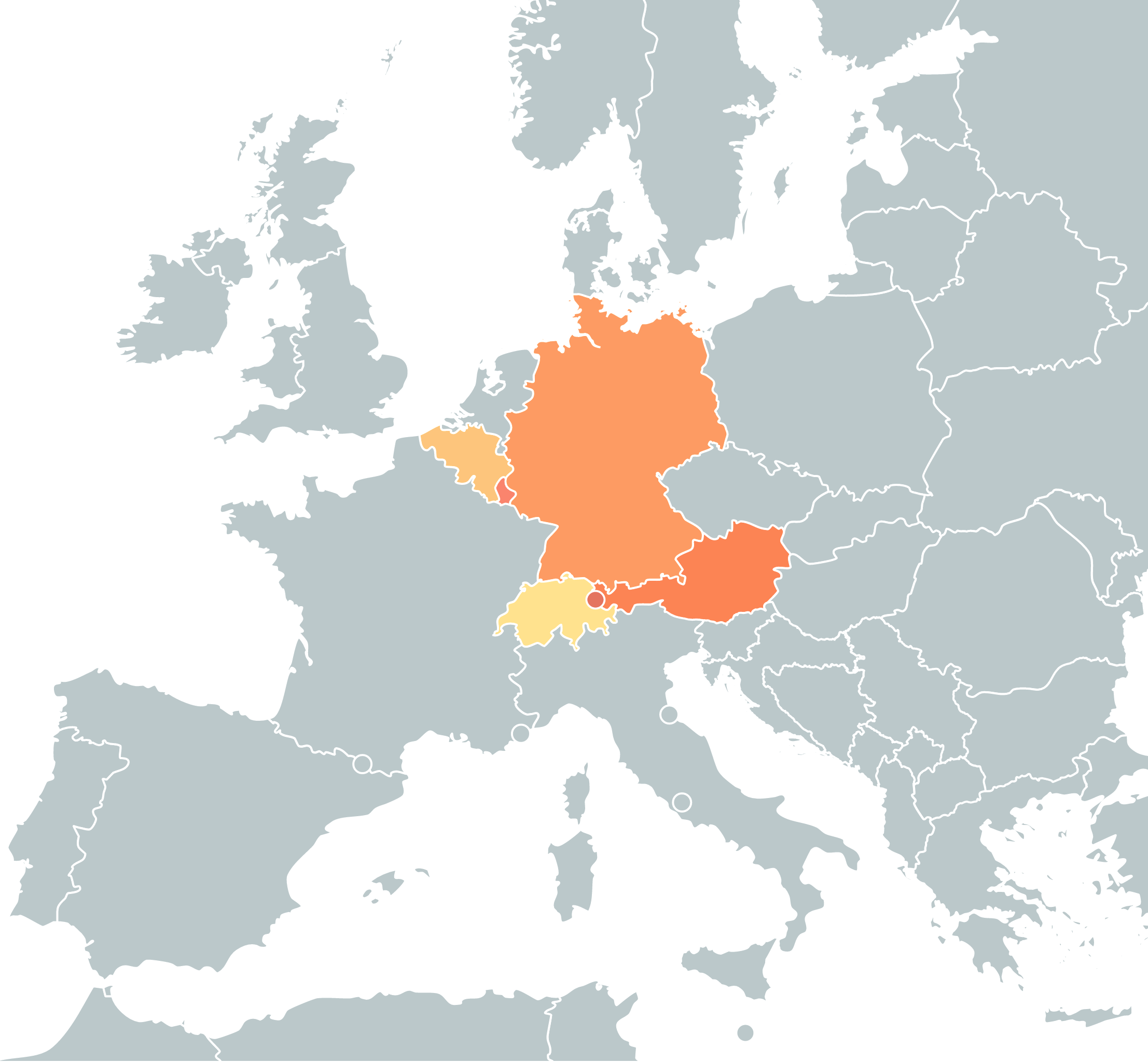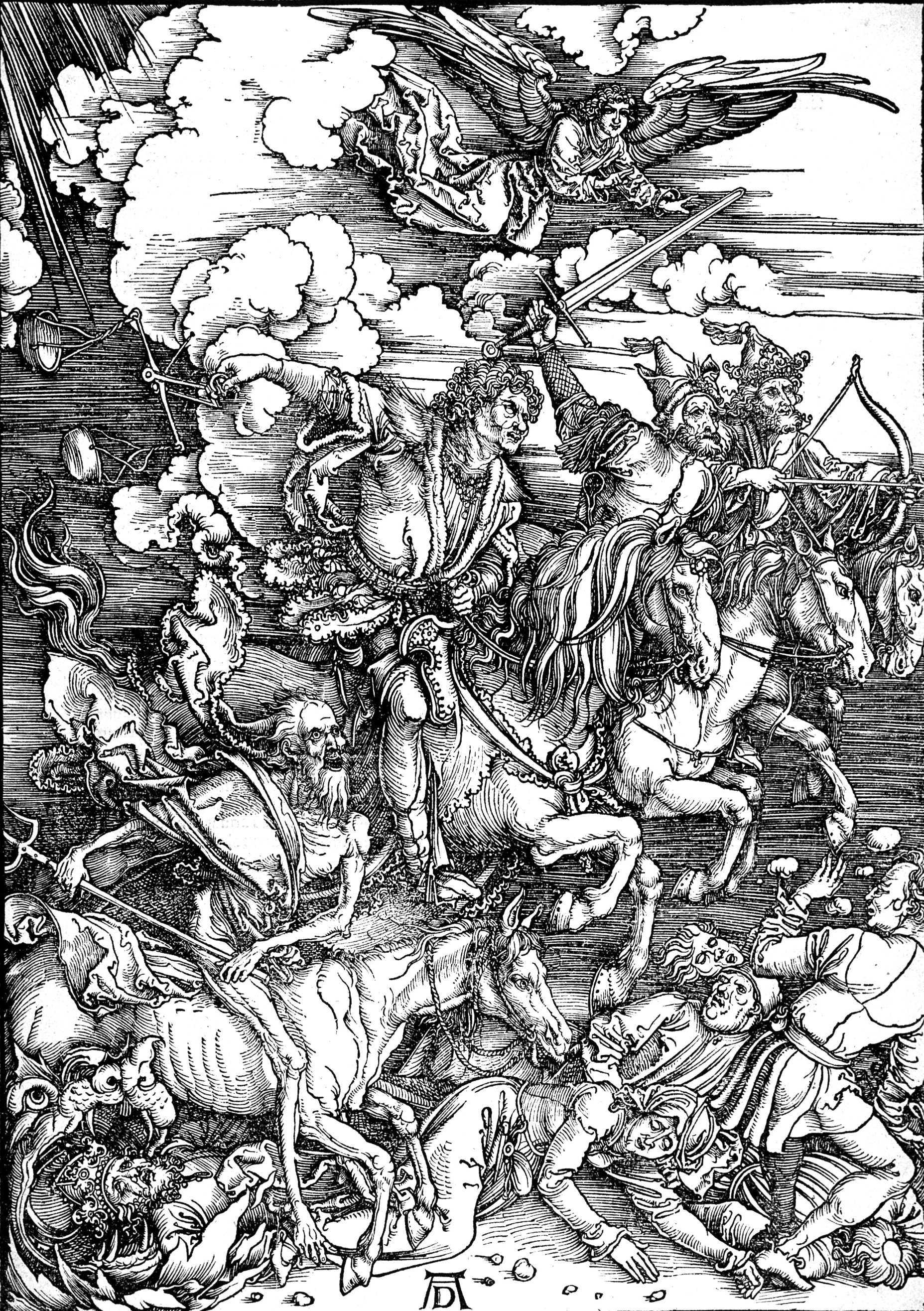|
Schwabacher
The German word Schwabacher (pronounced ) refers to a specific style of blackletter typefaces which evolved from Gothic Textualis (''Textura'') under the influence of Humanist type design in Italy during the 15th century. Schwabacher typesetting was the most common typeface in Germany, until it was replaced by Fraktur from the mid 16th century onwards. Etymology The term may derive from the Franconian town of Schwabach, where, in 1529, the Articles of Schwabach, a Lutheran creed, were adopted. The Articles became the basis of the 1530 Confessio Augustana, and possibly also promoted the use of Schwabacher types. Characteristics Similar to Rotunda, the rounded Schwabacher types were nearer to handwriting than the former Textualis style, though it also includes sharp edges. The lower-case ''g'' and upper-case ''H'' have particularly distinctive forms. In the context of German language texts, Schwabacher appeared vibrant and popular. History While the Latin Gutenberg Bible was ... [...More Info...] [...Related Items...] OR: [Wikipedia] [Google] [Baidu] |
Blackletter
Blackletter (sometimes black letter), also known as Gothic script, Gothic minuscule, or Textura, was a script used throughout Western Europe from approximately 1150 until the 17th century. It continued to be commonly used for the Danish, Norwegian, and Swedish languages until the 1870s, and for the German language until the 1940s, when Hitler's distaste for the supposedly "Jewish-influenced" script saw it officially discontinued in 1941. Fraktur is a notable script of this type, and sometimes the entire group of blackletter faces is incorrectly referred to as Fraktur. Blackletter is sometimes referred to as Old English, but it is not to be confused with the Old English language, which predates blackletter by many centuries and was written in the insular script or in Futhorc. Along with Italic type and Roman type, blackletter served as one of the major typefaces in the history of Western typography. Origins Carolingian minuscule was the direct ancestor of blackletter. Blac ... [...More Info...] [...Related Items...] OR: [Wikipedia] [Google] [Baidu] |
Fraktur
Fraktur () is a calligraphic hand of the Latin alphabet and any of several blackletter typefaces derived from this hand. The blackletter lines are broken up; that is, their forms contain many angles when compared to the curves of the Antiqua (common) typefaces modeled after antique Roman square capitals and Carolingian minuscule. From this, Fraktur is sometimes contrasted with the "Latin alphabet" in northern European texts, which is sometimes called the "German alphabet", simply being a typeface of the Latin alphabet. Similarly, the term "Fraktur" or "Gothic" is sometimes applied to ''all'' of the blackletter typefaces (known in German as , "Broken Script"). The word derives from Latin ("a break"), built from , passive participle of ("to break"), the same root as the English word "fracture". Characteristics Besides the 26 letters of the ISO basic Latin alphabet, Fraktur includes the ( ), vowels with umlauts, and the (''long s''). Some Fraktur typefaces also in ... [...More Info...] [...Related Items...] OR: [Wikipedia] [Google] [Baidu] |
Schwabach
Schwabach () is a German city of about 40,000 inhabitants near Nuremberg in the centre of the region of Franconia in the north of Bavaria. The city is an autonomous administrative district (''kreisfreie Stadt''). Schwabach is also the name of the river which runs through the city prior to joining the Rednitz. Schwabach is famous for its crafts made of gold, particularly gold foil. In 2004, Schwabach celebrated this tradition with an anniversary festival, marking "500 years gold foil in Schwabach". Around 1500, a local typesetter developed the " Schwabacher" font. This font was used for printing the first Bible in German, which had been worked out by Martin Luther. Etymology The name derives from the old Franconian name ''Suapaha'' (later ''Suabaha'', then ''Villa Suabach'') which translates as "Schwaben-Bach" in modern German, which means " Swabian stream", the first part of the name was given by the Franconians who came to the area about a millennium after the Hallstatt cul ... [...More Info...] [...Related Items...] OR: [Wikipedia] [Google] [Baidu] |
German Language
German ( ) is a West Germanic language mainly spoken in Central Europe. It is the most widely spoken and official or co-official language in Germany, Austria, Switzerland, Liechtenstein, and the Italian province of South Tyrol. It is also a co-official language of Luxembourg and Belgium, as well as a national language in Namibia. Outside Germany, it is also spoken by German communities in France ( Bas-Rhin), Czech Republic (North Bohemia), Poland ( Upper Silesia), Slovakia (Bratislava Region), and Hungary ( Sopron). German is most similar to other languages within the West Germanic language branch, including Afrikaans, Dutch, English, the Frisian languages, Low German, Luxembourgish, Scots, and Yiddish. It also contains close similarities in vocabulary to some languages in the North Germanic group, such as Danish, Norwegian, and Swedish. German is the second most widely spoken Germanic language after English, which is also a West Germanic language. German ... [...More Info...] [...Related Items...] OR: [Wikipedia] [Google] [Baidu] |
Emphasis (typography)
In typography, emphasis is the strengthening of words in a text with a font in a different style from the rest of the text, to highlight them. It is the equivalent of prosody stress in speech. Methods and use The most common methods in Western typography fall under the general technique of emphasis through a change or modification of font: ''italics'', boldface and . Other methods include the alteration of LETTER CASE and as well as and *additional graphic marks*. Font styles and variants The human eye is very receptive to differences in "brightness within a text body." Therefore, one can differentiate between types of emphasis according to whether the emphasis changes the " blackness" of text, sometimes referred to as typographic color. A means of emphasis that does not have much effect on blackness is the use of '' italics'', where the text is written in a script style, or '' oblique'', where the vertical orientation of each letter of the text is slanted to the lef ... [...More Info...] [...Related Items...] OR: [Wikipedia] [Google] [Baidu] |
Antiqua (typeface Class)
Antiqua () is a style of typeface used to mimic styles of handwriting or calligraphy common during the 15th and 16th centuries. Letters are designed to flow and strokes connect together in a continuous fashion; in this way it is often contrasted with Fraktur-style typefaces where the individual strokes are broken apart. The two typefaces were used alongside each other in the germanophone world, with the Antiqua–Fraktur dispute often dividing along ideological or political lines. After the mid-20th century, Fraktur fell out of favor and Antiqua-based typefaces became the official standard. History Antiqua typefaces are typefaces designed between 1470 and 1600 AD, specifically those by Nicolas Jenson and the Aldine roman commissioned by Aldus Manutius and cut by Francesco Griffo. The letterforms were based on a synthesis of Roman inscriptional capitals and Carolingian writing. Florentine poet Petrarch was one of the few medieval authors to have touched on the handwriting o ... [...More Info...] [...Related Items...] OR: [Wikipedia] [Google] [Baidu] |
Gutenberg Bible
The Gutenberg Bible (also known as the 42-line Bible, the Mazarin Bible or the B42) was the earliest major book printed using mass-produced movable metal type in Europe. It marked the start of the "Gutenberg Revolution" and the age of printed books in the West. The book is valued and revered for its high aesthetic and artistic qualities as well as its historical significance. It is an edition of the Latin Vulgate printed in the 1450s by Johannes Gutenberg in Mainz, in present-day Germany. Forty-nine copies (or substantial portions of copies) have survived. They are thought to be among the world's most valuable books, although no complete copy has been sold since 1978. In March 1455, the future Pope Pius II wrote that he had seen pages from the Gutenberg Bible displayed in Frankfurt to promote the edition, and that either 158 or 180 copies had been printed (he cited sources for both numbers). The 36-line Bible, said to be the second printed Bible, is also referred to sometimes a ... [...More Info...] [...Related Items...] OR: [Wikipedia] [Google] [Baidu] |
Apocalypse (Dürer)
The ''Apocalypse'', properly ''Apocalypse with Pictures'' ( la, Apocalipsis cum figuris), is a series of fifteen woodcuts by Albrecht Dürer published in 1498 depicting various scenes from the Book of Revelation, which rapidly brought him fame across Europe. These woodcuts likely drew on theological advice, particularly from Johannes Pirckheimer, the father of Dürer's friend Willibald Pirckheimer. Work on the series started during Dürer's first trip to Italy (1494–95), and the set was published simultaneously as a book with 15 pages of biblical text facing the 15 illustrations. in Latin and German at Nuremberg in 1498, at a time when much of secular Europe feared an invasion of the Ottoman Empire and Christian Europe anticipated a possible Last Judgment in the year 1500. Dürer was the publisher and seller of this series, and became the first artist to publish a book and create a copyright. Considering the 15 woodcuts, '' The Four Horsemen of the Apocalypse'' (c. 1497� ... [...More Info...] [...Related Items...] OR: [Wikipedia] [Google] [Baidu] |
Luther Bible
The Luther Bible (german: Lutherbibel) is a German language Bible translation from Latin sources by Martin Luther. The New Testament was first published in September 1522, and the complete Bible, containing the Old and New Testaments with Apocrypha, in 1534. Luther continued to make improvements to the text until 1545. It was the first full translation of the Bible into German which made use of Greek texts, not just their Latin Vulgate translations. However, the updated 2017 translation of the Luther Bible published by the Evangelical Church in Germany notes that "Luther translated according to the Latin text". Luther did not speak Greek, Hebrew, or Aramaic and relied heavily on other scholars for assistance, particularly Melanchthon. One of the textual bases of the New Testament translation was the Greek version recently published by the Dutch Catholic humanist Erasmus of Rotterdam and called the Novum Instrumentum omne. The project absorbed Luther's later years. Thanks to t ... [...More Info...] [...Related Items...] OR: [Wikipedia] [Google] [Baidu] |
Schedel Konstantinopel
Hartmann Schedel (13 February 1440 – 28 November 1514) was a German historian, physician, humanist, and one of the first cartographers to use the printing press. He was born and died in Nuremberg. Matheolus Perusinus served as his tutor. Schedel is best known for his writing the text for the ''Nuremberg Chronicle'', known as ''Schedelsche Weltchronik'' (English: ''Schedel's World Chronicle''), published in 1493 in Nuremberg. It was commissioned by Sebald Schreyer (1446–1520) and Sebastian Kammermeister (1446–1503).Hartmann Schedule, Weltchronik, Kolorierte Gesamtausgabe von 1493, Einleitung und cementer Stephen Füssel, Weltbild Verlag Maps in the ''Chronicle'' were the first ever illustrations of many cities and countries. With the invention of the printing press by Johannes Gutenberg in 1447, it became feasible to print books and maps for a larger customer basis. Because they had to be handwritten, books had previously been rare and very expensive. Schedel was als ... [...More Info...] [...Related Items...] OR: [Wikipedia] [Google] [Baidu] |
Nazi Party
The Nazi Party, officially the National Socialist German Workers' Party (german: Nationalsozialistische Deutsche Arbeiterpartei or NSDAP), was a far-right political party in Germany active between 1920 and 1945 that created and supported the ideology of Nazism. Its precursor, the German Workers' Party (; DAP), existed from 1919 to 1920. The Nazi Party emerged from the extremist German nationalist, racist and populist paramilitary culture, which fought against the communist uprisings in post– World War I Germany. The party was created to draw workers away from communism and into nationalism. Initially, Nazi political strategy focused on anti– big business, anti-bourgeois, and anti-capitalist rhetoric. This was later downplayed to gain the support of business leaders, and in the 1930s, the party's main focus shifted to antisemitic and anti-Marxist themes. The party had little popular support until the Great Depression. Pseudoscientific racist theories were ... [...More Info...] [...Related Items...] OR: [Wikipedia] [Google] [Baidu] |





.png)


